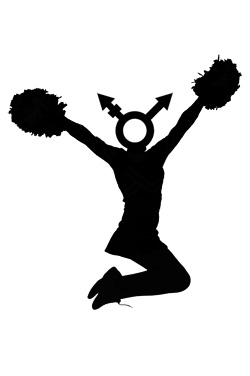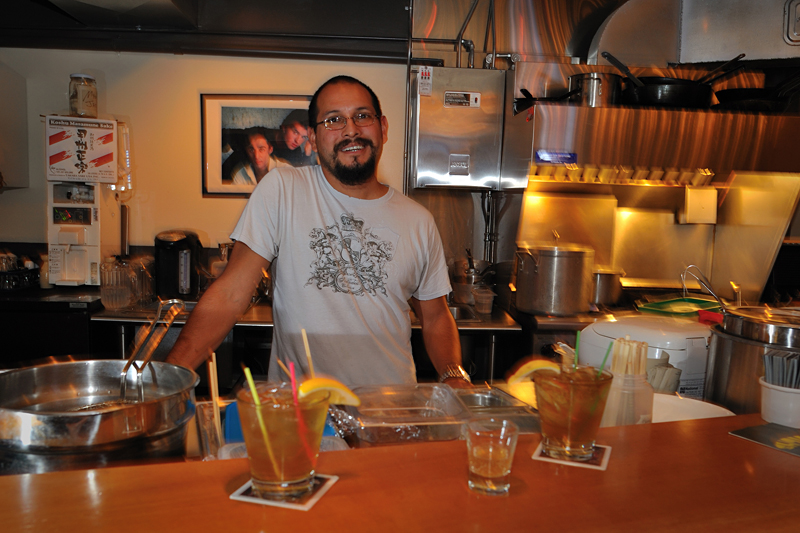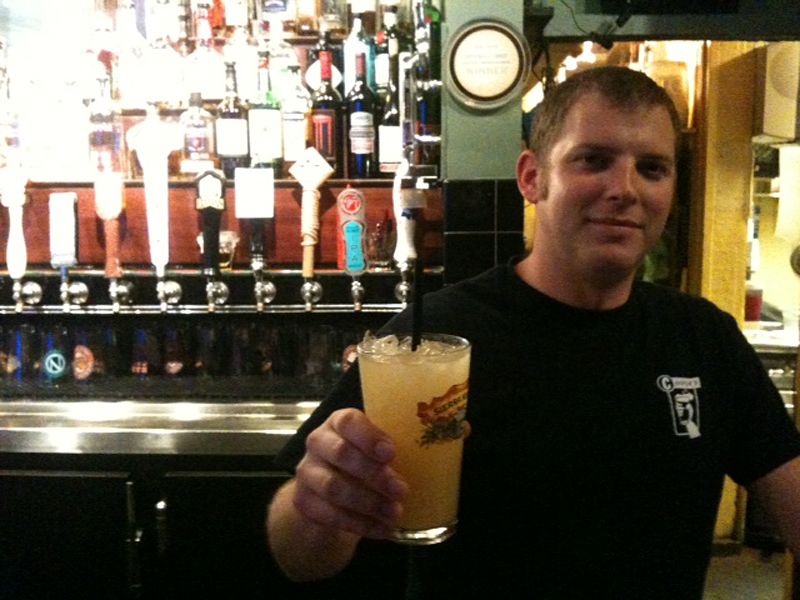Cheerleading tryouts are where girls become women and losers join the debate team. Last spring, Mount Vernon High School freshman Jai Johnson-Baker wanted to don the pleated skirt and tennis shoes and lead fellow students in chants of “De-fense!”
The only hitch: Johnson-Baker’s birth certificate lists him as a male.
Men are allowed on the cheer squad and are often used for tricky stunts. In this case, however, “it more becomes an issue of attire,” says Mount Vernon’s athletic director, Eric Monson.
By May, the American Civil Liberties Union got involved. Legal Director Sarah Dunne wrote a letter to Mount Vernon characterizing the exclusion of students from full participation in the cheerleading squad based on their gender as unlawful and asking the school to “take proactive steps to ensure that all students feel welcome to participate in cheerleading.”
For guidance, Monson turned to the Washington Interscholastic Activities Association, but it had no policy for dealing with such a situation. Ultimately, Johnson-Baker was allowed to try out for a female role on the squad but didn’t make the cut. ACLU spokesperson Doug Honig says Johnson-Baker plans to take another shot this year, and “we’ll be watching to make sure he gets to try out.” Johnson-Baker declined, by e-mail, to discuss the specifics of the situation with Seattle Weekly, other than to say that he has not undergone a surgical procedure to change genders.
This wasn’t the first time the WIAA faced questions about the role of students with complicated sexual identities in high-school athletics. Another student had contacted the WIAA earlier in the school year. Born a male, the student was living as a woman but had not gone through surgical sexual reassignment, wherein hormones are administered to make a person’s body function like the opposite gender, followed by surgery to make their anatomy match. That surgery can include everything from the creation or removal of genitalia to shaving down the Adam’s apple of former men. The student was interested in participating in volleyball and track on the girls’ teams, says WIAA Executive Director Mike Colbrese. Around that time, two more schools contacted Colbrese with questions about transgender students. So he asked Assistant Director Jim Meyerhoff, a barrel-chested man who wears trainers to work, to research possible policies, telling him, “We better get something drafted.”
“We’ve not only got to be sensitive to the transgender athlete,” says Colbrese, “we’ve got to be sensitive, obviously, to all those athletes with whom they would be competing.”
Meyerhoff found that among the 50 other state high-school activity organizations (with one for Washington, D.C.), none had a policy on the eligibility of transgender athletes. Neither did the NCAA.
The only organization Meyerhoff could find that had written guidelines was the International Olympic Committee. In May 2004, the IOC determined that anyone who had undergone sex reassignment before puberty can compete in the gender of their reassignment. Helen Carroll, sports project director at the San Francisco–based National Center for Lesbian Rights, says transgender athletes have yet to show up in the games, but notes that Canadian cyclist Kristen Worley, a male-to-female post-op transsexual, is hoping to make her nation’s team for the Beijing games. “We’re thinking she’s going to be the first openly out trans person that’s competing in the Olympics,” Carroll says.
For athletes who changed sexes after puberty, there are stricter requirements: All surgical anatomical changes have to be completed; legal documentation, such as a driver’s license, has to be provided that reflects the new gender; and hormonal therapies have to have been administered for enough time to minimize gender-related advantages. The IOC also recommends that the athlete wait at least two years after a gonadectomy—the removal of the testicles in men and the ovaries in women—before competing.
Colbrese decided to adopt the IOC rules, making the two-year wait a requirement. That would exclude students like Johnson-Baker, who may dress and live as a female but are still physically male, from participating in competitive sports. However, in Johnson-Baker’s case, the Mount Vernon cheerleading squad is not a competitive sport, so participation would still be allowable at the discretion of the school. Monson says Johnson-Baker may try out again next year.
Not everyone thinks it’s a good idea to apply a policy designed for adult athletes to minors. Marci Bowers, a Seattle-based surgeon who performs gender-reassignment surgeries at a clinic in Colorado, says the new WIAA rules are “kind of silly” because surgical options generally aren’t available to minors. According to Bowers, most surgeons performing sex reassignments make potential patients wait until they are 18.
Bowers would like to see high-school associations like the WIAA make room for hormone treatments that can stave off puberty if begun early enough, thereby keeping the playing field level, or allow for treatments after puberty that can reverse the impact of hormones like testosterone. “It would be fair” to allow teens to participate in sports two years after they’ve begun such treatment, she says.
Carroll, who is advising WIAA on refining its policy, agrees that it has shortcomings, but adds that she is grateful the organization has made a move on the issue. “The policy is not perfect,” says Carroll, “but if something’s not out there, we can’t work to make it better.”







